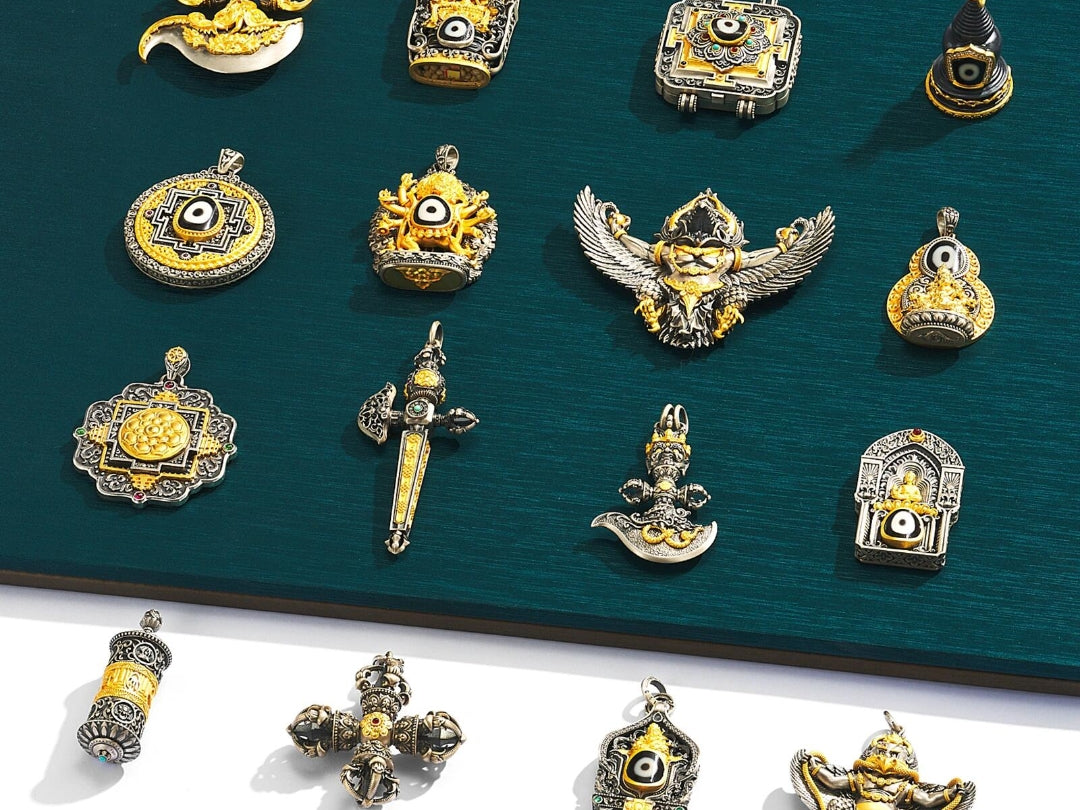Walk into a Tibetan silver workshop and what greets you first is rhythm: the steady tap of a chasing hammer, the soft rasp of files, the focused silence of a hand guiding wax through its first lines. These are small, repeated actions — the building blocks of an artisan’s life. For anyone curious about where a Tibetan amulet or silver pendant truly comes from, the workshop tells the story: from apprentice’s first mistakes to a master’s finishing stroke, every step shapes the object’s spirit.
The apprenticeship: a patient, hands-on curriculum
Becoming a silversmith in many Himalayan communities is rarely a short course. Traditionally, an aspiring artisan begins as an apprentice, often working under a single master for years. The early days are foundational and repetitive: preparing workbenches, learning to read simple design drawings, and practicing tool control — holding hammers, tweezers, and carving knives the right way. These mundane tasks are deliberate; they train the hands and build a quiet discipline.
As skills grow, the apprentice moves into more refined tasks: carving wax models for lost-wax casting, filing castings clean, and learning how to solder without burning the piece. Over time the apprentice learns chasing and repoussé — the techniques that push and shape metal from the front and back to create relief and texture. Stone setting, polishing, and finally the subtle art of patina and finishing complete the circle. It’s not rare for mastery to take a decade or more; the timeline depends on the workshop and the complexity of the craft.

Cornerstones of the craft: lost-wax, chasing, inlay, polish
A few techniques define the workshop’s output:
Lost-wax casting (cire perdue). A wax model is carved, sprued, encased in a refractory mold, then heated so the wax melts away. Molten silver is poured into the resulting cavity. This process allows for intricate, three-dimensional forms — perfect for amulets and small Thangka reliefs.
Chasing and repoussé. After casting, a piece is often too raw for final wear. Chasing (refining details on the front) and repoussé (raising forms from the back) bring depth, clarity, and definition. These hammer-and-punch techniques are where an artisan’s eye for proportion truly shines.
Inlay and stone setting. Many Tibetan pieces carry turquoise, coral, or other semiprecious stones. Setting these requires a delicate balance — the metal must hold the stone securely without overwhelming its color or meaning.
Polishing and patina. A final polish brings out the metal’s luster; a controlled patina can add contrast and age. Far from being mere decoration, finishes help the iconography read clearly — the lotus, the mantra script, the deity’s face.

The workshop day: routines that shape skill and ethics
A typical day in an artisan silver workshop is practical and communal. Mornings often begin with tool checks and work assignments. Senior artisans sketch or refine commissions while apprentices prepare waxes or clean castings. Lunch is a pragmatic pause — shared stories, technique tips, a look at the day’s progress. Afternoons focus on detail work: delicate chasing, precise soldering, careful stone setting.
Craft ethics are passed along with technique. Respect for materials, patience with a slow process, and a commitment to quality over speed are repeated lessons. In many workshops, there’s also a strong sense of stewardship — preserving styles and proportions that make the work recognizably Tibetan, even when designers adapt pieces for modern wearers.
How these skills shape the finished amulet
A well-made Tibetan silver amulet reflects the whole workshop’s rhythm. Look closely and you’ll see it: crisp mantra engraving, balanced relief depth, stones set to catch light without wobbling, solder seams that have been blended into the design. These are the fingerprints of a workshop that values craft.
Function matters as much as form. Amulets meant for daily wear often prioritize secure stone settings and robust chains; pieces intended for shrine display may favor delicate enameling or hand-painting. The artisan’s decisions — guided by training and client needs — turn a raw idea into a durable object with cultural meaning.
Care, sustainability, and ethical sourcing
Good workshops also pay attention to materials and sourcing. Traditional "Tibetan silver" alloys differ from modern S925 sterling; trustworthy makers disclose their metal content and take care to avoid problematic sources for stones or metals. Many contemporary workshops are also moving toward more transparent supply chains and fair wages for apprentices and artisans.
Caring for a silver amulet is simple: keep painted surfaces dry, polish sparingly with a soft cloth, and store items separately to avoid scratches. When an amulet carries a blessing, treat it with that extra care and respect.
Final thought: why the human story matters
A pendant bought without context is just metal and stone. A pendant made in a living workshop carries a lineage: the sweat of an apprentice’s first mistakes, the steady eye of a journeyman, the finishing wisdom of a master. Knowing that story makes the object more than an accessory — it becomes a small, wearable testimony to a craft that continues to matter.
If you’re shopping for a Tibetan amulet, ask about workshop practices, how apprentices are trained, and where materials come from. Those questions help sustain honest workshops and let ancient skills move forward into the modern world with integrity.




